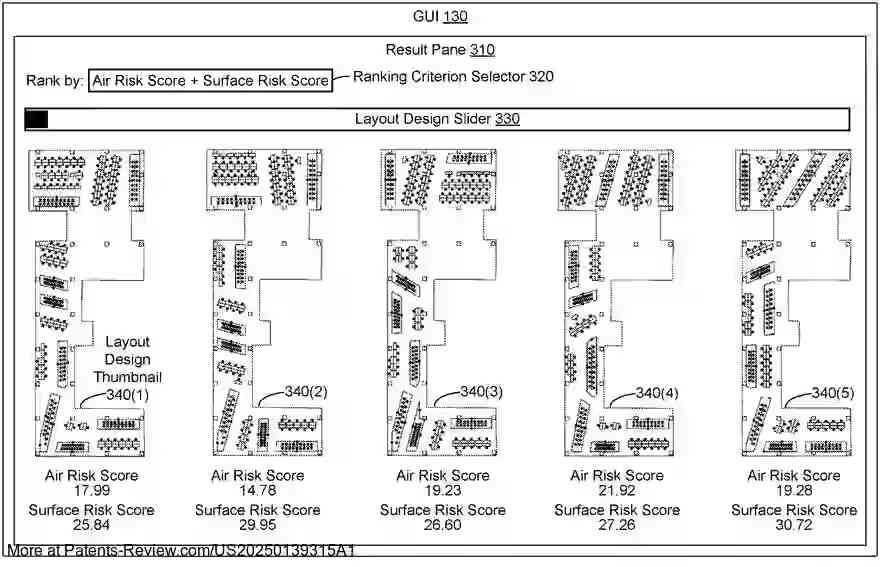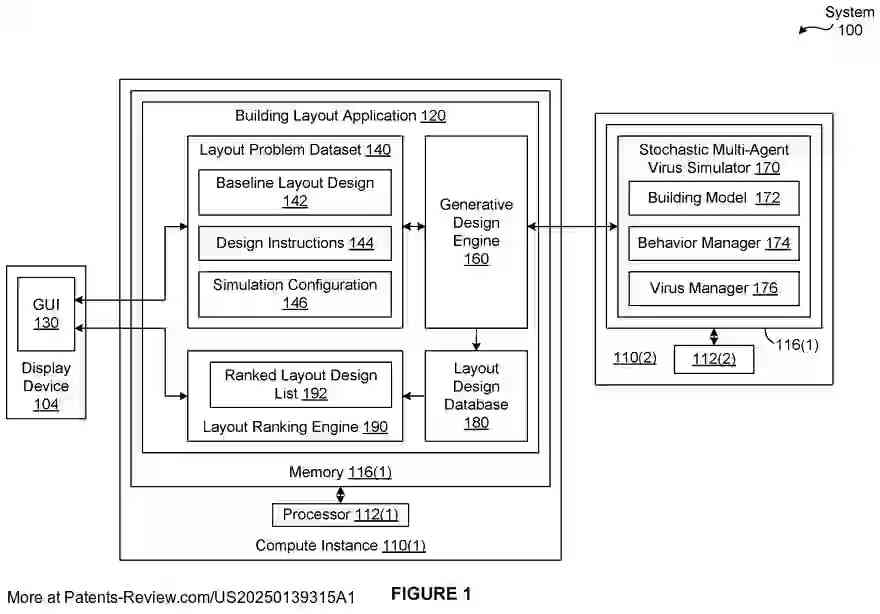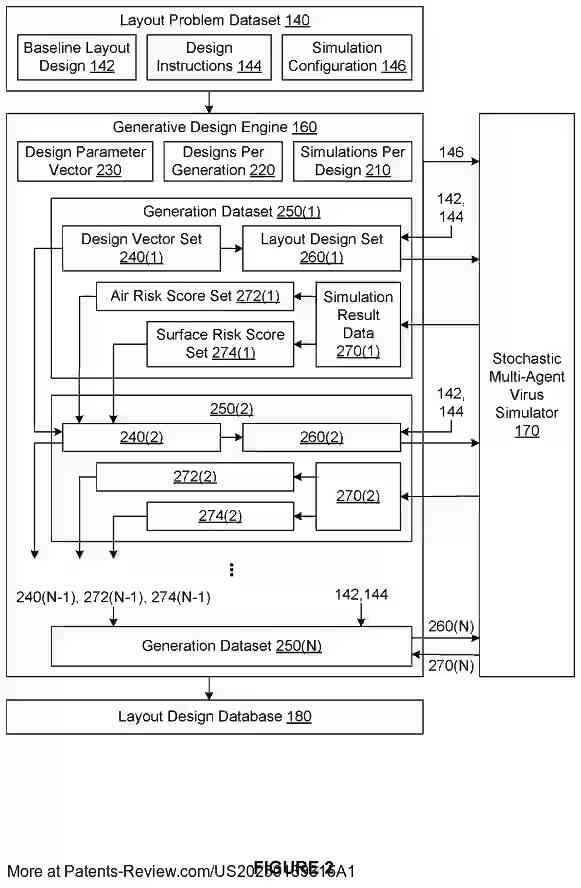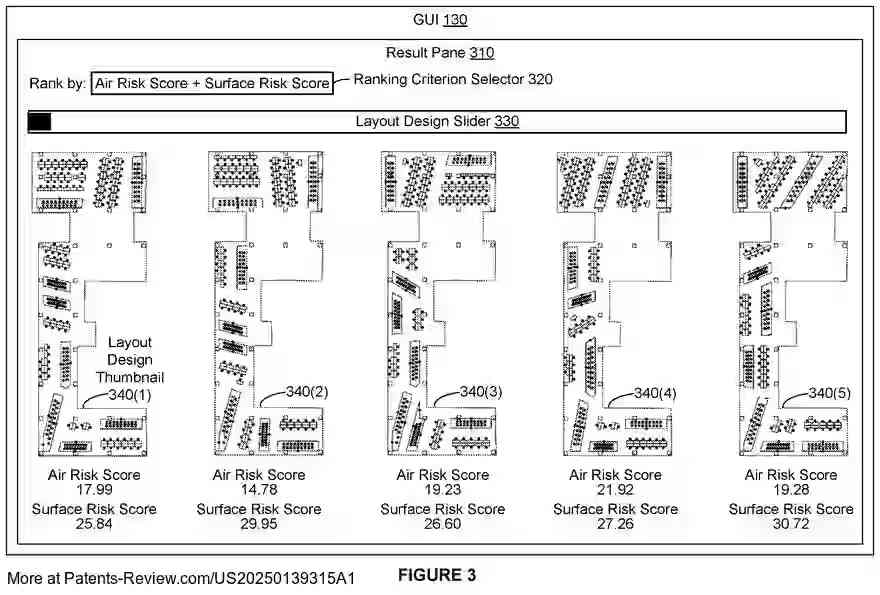TECHNIQUES FOR AUTOMATICALLY GENERATING BUILDING LAYOUT DESIGNS THAT REDUCE TRANSMISSION OF VIRUSES
US20250139315
2025-05-01
Physics
G06F30/13
Inventors:
Applicant:
Drawings (4 of 5)




Smart overview of the Invention
The patent application describes a method for generating building layout designs aimed at reducing virus transmission. It leverages a building layout application that creates initial design sets based on predefined vectors and a baseline layout. The application employs a stochastic multi-agent virus simulator to assess these designs multiple times, producing simulation results that help compute risk scores associated with virus transmission. Evolutionary operations are then applied to refine the design vectors, leading to the creation of improved layout designs that potentially lower virus transmission rates.
Background
The field of this invention is rooted in computer science, particularly in computer-aided design (CAD) software. Traditional CAD approaches allow designers to arrange spatial elements in a building, impacting virus transmission rates. However, these methods are limited by time constraints and the designer's ability to explore the vast design space effectively. The need for better techniques has grown, especially given the recent emphasis on reducing virus transmissions in building designs.
Challenges with Conventional Methods
Conventional CAD techniques often require significant time and effort, restricting the number of layout designs that can be explored and refined. Designers must rely on heuristic-based estimation and simulation software to evaluate layouts, often leading to sub-optimal solutions. The complexity of spatial arrangements further complicates the process, as intuitive design strategies may not always yield the best results in minimizing virus spread.
Technical Advantages
The disclosed method offers several advantages over traditional CAD methods. Automated generation and optimization of layout designs increase the number of explored options significantly. Using evolutionary algorithms allows for a systematic exploration of the design space, focusing on reducing virus transmission metrics. This approach can uncover non-intuitive spatial arrangements that might otherwise be overlooked, offering technological improvements over prior art.
System Implementation
The system implementing these techniques may include multiple compute instances, each with processors and memory, possibly distributed across different locations or within cloud environments. These compute instances execute instructions necessary for simulating virus transmissions and refining layout designs. The system's architecture supports flexibility in storage and processing capabilities, ensuring efficient operation within various computing environments.